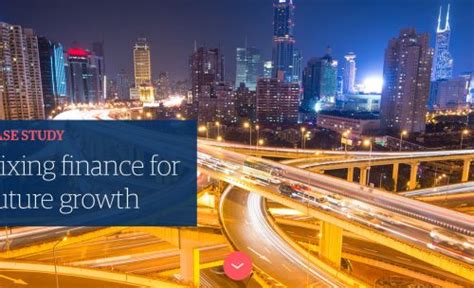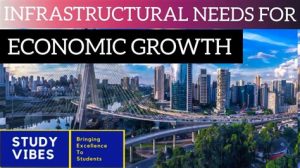The Nexus Between Infrastructural Development and Economic Growth

The Nexus Between Infrastructural Development and Economic Growth for National Development
Infrastructural development is the backbone of any thriving economy. It encompasses the construction and maintenance of physical systems, including transportation networks, energy supply systems, communication facilities, and social amenities. The correlation between robust infrastructure and economic growth cannot be overstated, as it facilitates industrialization, enhances productivity, and promotes national development. This article explores the intricate relationship between infrastructural development and economic growth and highlights its role in fostering national progress.
Infrastructural Development: A Catalyst for Economic Growth
- Facilitating Trade and Commerce:
- Efficient transport systems, such as roads, railways, and ports, enable the smooth movement of goods and services.
- Reliable communication infrastructure fosters connectivity, allowing businesses to thrive in a competitive global market.
- Boosting Industrial Productivity:
- Stable energy supply systems power industries, reducing production costs and enhancing output.
- Access to water and waste management infrastructure ensures sustainable industrial operations.
- Encouraging Foreign Investment:
- Modern infrastructure attracts foreign investors seeking operational efficiency and market accessibility.
- Improved ease of doing business due to infrastructure leads to increased investment inflows.
- Job Creation and Poverty Reduction:
- Infrastructure projects create employment opportunities during construction and maintenance phases.
- Improved access to markets enables rural communities to participate in economic activities, reducing poverty.
The Role of Infrastructure in National Development
- Human Capital Development:
- Quality education and healthcare facilities enhance the skills and well-being of the workforce.
- Accessibility to clean water and sanitation improves living standards, contributing to national development.
- Urbanization and Regional Connectivity:
- Infrastructure development supports urbanization, creating hubs of economic activity.
- Regional integration through infrastructure connects rural and urban areas, bridging economic disparities.
- Technological Advancement:
- Investments in ICT infrastructure drive innovation and digital transformation, fostering economic diversification.
- Access to modern technology promotes entrepreneurship and the growth of start-ups.
- Sustainable Development:
- Green infrastructure reduces environmental impact, ensuring long-term economic viability.
- Renewable energy systems contribute to energy security and reduce reliance on fossil fuels.
Challenges to Infrastructural Development
- Funding Constraints:
- Limited government budgets and inefficient allocation of resources hinder infrastructure projects.
- Dependence on foreign loans increases national debt burdens.
- Corruption and Mismanagement:
- Corruption in project implementation leads to substandard infrastructure and inflated costs.
- Poor project planning and execution result in delays and resource wastage.
- Security Concerns:
- Insecurity in regions deters investments in infrastructure, limiting economic opportunities.
- Destruction of infrastructure due to conflicts disrupts economic activities.
- Environmental Degradation:
- Infrastructure projects often lead to deforestation, loss of biodiversity, and climate change.
- Balancing economic growth with environmental preservation is a critical challenge.
Strategies for Harnessing the Nexus Between Infrastructure and Growth
- Public-Private Partnerships (PPPs):
- Collaborations between governments and private entities can mobilize funds and expertise for infrastructure projects.
- PPPs ensure efficient project execution and maintenance.
- Policy Reforms:
- Transparent policies and regulatory frameworks encourage investment in infrastructure.
- Anti-corruption measures and accountability improve project outcomes.
- Innovative Financing:
- Leveraging sovereign wealth funds, bonds, and international grants can bridge funding gaps.
- Adoption of Build-Operate-Transfer (BOT) models ensures cost recovery for investors.
- Focus on Sustainability:
- Incorporating green technologies and renewable energy in projects ensures environmental protection.
- Sustainable urban planning minimizes resource depletion and enhances quality of life.
Case Studies: Infrastructure Driving Economic Growth
- China:
- Massive investments in transport, energy, and ICT infrastructure have transformed China into a global economic powerhouse.
High-speed rail networks and urbanization projects have facilitated regional connectivity and industrial growth.
- Rwanda:
- Focus on ICT infrastructure, such as the Kigali Innovation City, has positioned Rwanda as a hub for technology and innovation.
- Investments in clean energy and sustainable housing have spurred economic development.
- Nigeria:
- Projects like the Lagos-Ibadan railway and the Dangote Refinery demonstrate the potential of infrastructure to stimulate growth.
- However, challenges like funding constraints and insecurity continue to hamper progress.
Conclusion
The nexus between infrastructural development and economic growth is crucial for national development. Well-planned and efficiently executed infrastructure projects lay the foundation for a prosperous and sustainable economy. By addressing challenges such as funding, corruption, and environmental concerns, nations can unlock the full potential of infrastructure to drive growth, improve living standards, and achieve long-term development goals. For Nigeria and other developing countries, prioritizing infrastructure is not just a necessity but an imperative for achieving inclusive and transformative progress.





